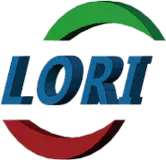Semiconductor lasers are widely used in industrial processing, information communication, medical applications, life sciences, and military fields due to their small size, light weight, low energy consumption, ease of modulation, and mass production capability. As the output power of semiconductor lasers continues to increase, a significant portion of electrical power is converted into thermal power. The optical characteristics, output power, and reliability of semiconductor lasers are closely related to the operating temperature of the device. Therefore, heat dissipation has become a critical factor affecting the performance of semiconductor lasers, especially high-power semiconductor lasers.
Heat Dissipation Principles for Semiconductor Lasers
The main heat dissipation packaging methods for semiconductor lasers include natural convection heat sinks, microchannels, thermoelectric cooling, spray cooling, and heat pipe cooling. For single-bar semiconductor lasers, natural convection heat sink cooling is easy to process and assemble, making it the most economical and commonly used cooling method. Typically, high thermal conductivity materials are used for heat sinks to expand the natural convection heat dissipation area, increasing the amount of heat dissipation and reducing the temperature of the laser chip. To bring the active region of the laser chip closer to the heat sink and shorten the heat transfer path for quicker heat removal, an inverted packaging structure with the chip facing down is commonly used. The semiconductor laser chip is attached to the heat sink using solder materials such as indium or gold-tin.
Most of the heat generated by the semiconductor laser occurs in the active region of the chip, which is conducted through the solder layer, insulation layer, and interface layer to the transition heat sink and conventional heat sink. The conventional heat sink then contacts the cooling medium to form convective heat exchange and dissipate the heat. Choosing appropriate heat sink materials is an effective method to reduce the operating temperature of the semiconductor laser and ensure its performance and reliability. The selection of heat sink materials primarily considers two aspects:
1. The material should have high thermal conductivity to effectively dissipate the heat generated during the laser's operation.
2. The thermal expansion coefficient of the heat sink material should match that of the laser chip as closely as possible to avoid damaging the chip due to thermal stress.
Heat Sink Materials for Semiconductor Lasers
An ideal transition heat sink material should have high thermal conductivity and match the thermal expansion coefficient of the laser chip. Copper, known for its high thermal conductivity and electrical conductivity, is commonly used as a heat sink material in semiconductor laser packaging. However, the thermal expansion coefficient of copper significantly differs from that of the chip, which can cause thermal stress and affect the laser's output performance. Adding a transition heat sink with high thermal conductivity and a thermal expansion coefficient close to that of the chip between the chip and the conventional heat sink can effectively resolve this issue. Common transition heat sink materials include aluminum nitride ceramics, beryllium oxide ceramics, silicon carbide ceramics, tungsten-copper alloys, silicon carbide wafers, and diamond films.
1. Tungsten-Copper
Tungsten-copper alloys consist of tungsten and copper, which do not dissolve or form intermetallic compounds but are uniformly mixed phases, essentially a pseudo-alloy. Tungsten-copper alloys are produced using powder metallurgy and combine the low expansion properties of tungsten with the high thermal conductivity of copper. The thermal expansion coefficient and thermal and electrical conductivity of tungsten-copper can be adjusted by varying the composition, matching the thermal expansion coefficients of silicon wafers, gallium arsenide, and ceramic materials. Early lasers often used tungsten-copper C-Mount structures, which later evolved into tungsten-copper bars.
2. Aluminum Nitride
Aluminum nitride ceramics exhibit excellent properties with high thermal conductivity, theoretically reaching 320 W/(m·K), while commercially available products typically have thermal conductivities ranging from 180 W/(m·K) to 260 W/(m·K). The thermal expansion coefficient of aluminum nitride ceramics is close to that of the laser chip, making it a common choice for transition heat sink materials.
3. Silicon Carbide
Silicon carbide (SiC) is a typical natural superlattice polytype with excellent physical and chemical properties. Its high hardness and wear resistance are only second to diamond, with a theoretical thermal conductivity of up to 490 W/(m·K), three times that of silicon. SiC has a low thermal expansion coefficient and good heat dissipation performance, making it suitable for high-power devices. It has high thermal stability, cannot melt under normal pressure, and has strong corrosion resistance. Its surface easily oxidizes to form silicon dioxide, preventing further oxidation.
4. Diamond
For better heat dissipation, diamond can be used as a connecting material between copper and the chip. Natural diamond has a thermal conductivity of up to 2000 W/(m·K), about five times that of copper, with a small thermal expansion coefficient. Therefore, using electrically insulating yet highly thermally conductive diamond as a heat sink for high-power semiconductor lasers is ideal.
Due to cost issues, natural diamond cannot be used in semiconductor laser packaging. Currently, diamond is used as a heat sink material in two main forms: diamond films (CVD diamond films) and composites of diamond with metals like copper or aluminum. However, the high difficulty in cutting, surface polishing, and metallizing diamond limits its large-scale application in semiconductor laser heat sinks.
5. Graphene
Graphene is a new two-dimensional carbon nanomaterial with a single atomic layer thickness, possessing excellent electrical, optical, and thermal properties. Single-layer graphene has a transverse thermal conductivity of up to 5300 W/(m·K), far exceeding that of silicon carbide, aluminum nitride, and other heat sink materials. Its application in semiconductor laser heat sinks holds significant promise for improving device heat dissipation and enhancing device performance.
Lori is a manufacturer specializing in high-power heat sinks, integrating production and R&D. We offer customized and innovative heat dissipation solutions for your semiconductor lasers and can also handle production simultaneously. If you need assistance, please contact us!





